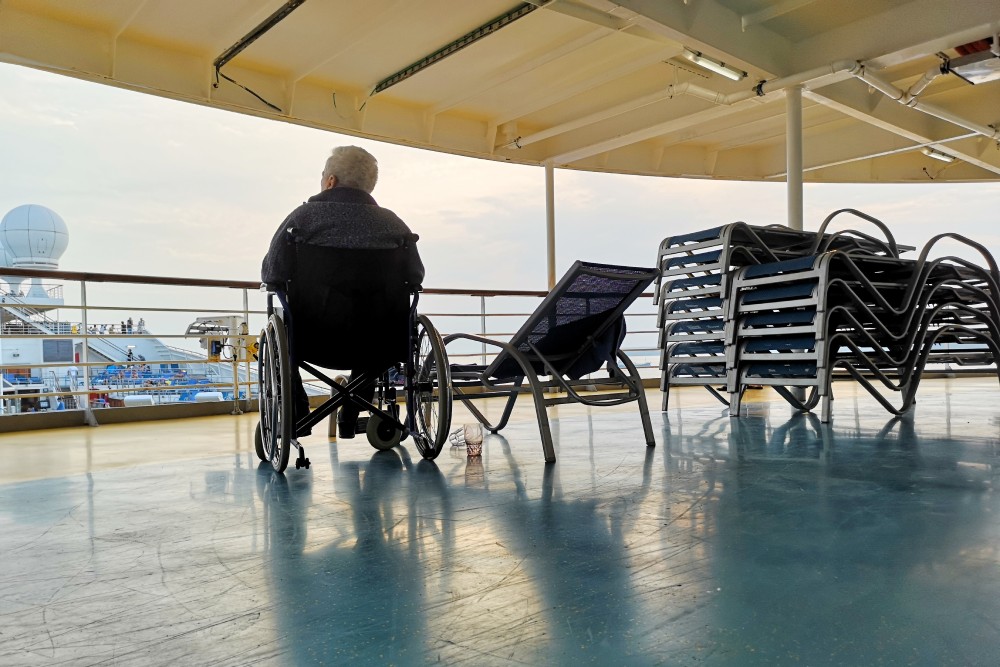Tips to book an accessible cruise for those with disabilities

Cruises are often among the most popular modes of transport for travelers with mobility and accessibility needs. This is because of the fewer logistics involved compared to air and road travel. There are no added challenges, such as finding an accessible taxi or confirming whether a restaurant has accessibility provisions. That said, not all cruises have accessibility features, so before booking a trip, individuals should consider a few tips to make an informed decision.
Choose larger cruise ships
Usually, the larger a ship, the more likely it is to be accessible to everyone. Small ships like riverboats and paddlewheelers have less space. This is why these are not recommended, especially for wheelchair users. In most cases, many of these ships are completely inaccessible. However, big cruise ships guarantee at least some level of accessibility.
Book early
Most of the larger cruise ships have a capacity of around 5,000 to 7,000 passengers. However, even with so much space, the number of wheelchair-accessible cabins can be limited. Most of these cruises generally tend to offer only a few dozen accessible rooms. These get booked up really quickly. This is why it is crucial to reserve an accessible cabin as early as possible. Doing some research on how early to make the bookings can help. For example, Alaska cruises usually require travelers to book their accessible cabins at least a year or more before the sail date. Setting up alerts for the on-sale dates can be useful for securing a room on a favorite cruise.
Confirm accessibility before booking
Before booking a room, individuals should ensure they check all the accessibility features available on the specific cruise ship. If the trip includes a flight, individuals must confirm with the airline whether any special accommodations are required, such as wheelchair assistance and specific seating arrangements for extra equipment.
Similarly, suppose the cruise package includes a hotel stay. In that case, it is useful to verify that the place has disability-friendly features, such as elevators, ramps, accessible bathrooms, service dog access, sign language assist, Braille menus and signage, and enough space for mobility devices.
Not only that, but individuals must ensure that transportation, such as shuttles, rental cars, and taxis, to and from the destination, are properly equipped to handle any specific needs. Sometimes, this information is not listed online. So, it is best to get confirmation via email.
Check if ports of call are tendered or docked
Another huge advantage of going on a cruise vacation is that it allows travelers to explore various destinations on a single itinerary. Travelers who use mobility devices must confirm whether the ship docks or is tendered at the ports of call to ensure that visiting these ports of call is hassle-free. When a ship is docked and tied to a pier, wheelchair users can roll down an accessible ramp to disembark. However, if the ship is anchored offshore and smaller boats called tenders are used to take passengers ashore, those using mobility equipment might find it challenging to disembark. So, it is best to check the itinerary online or call the cruise line to find out if the port is tendered or docked.
Rent mobility equipment
For many travelers who use wheelchairs, one of the most challenging aspects of travel is taking along the necessary equipment. Most disability equipment, such as motorized wheelchairs, shower or commode wheelchairs, patient lifts, and wheelchair chargers, is essential but difficult to transport once the destination is reached. To avoid this problem, travelers can sign up with companies that rent mobility equipment, especially for cruises. These companies arrange for the equipment to be placed in the cabin that a traveler has booked as soon as they board the ship.